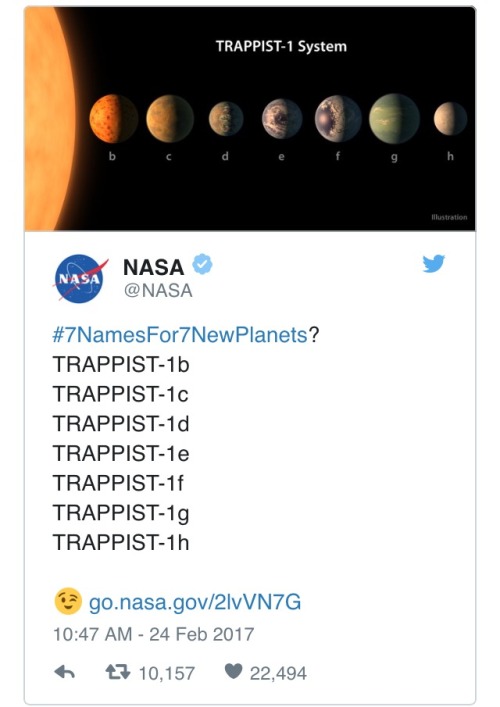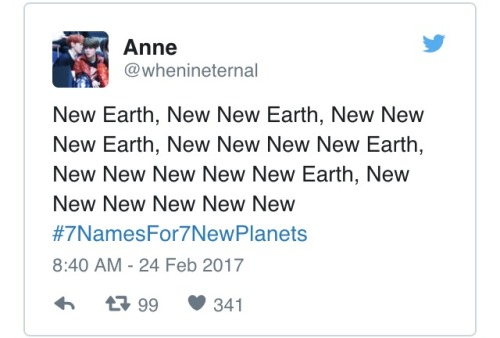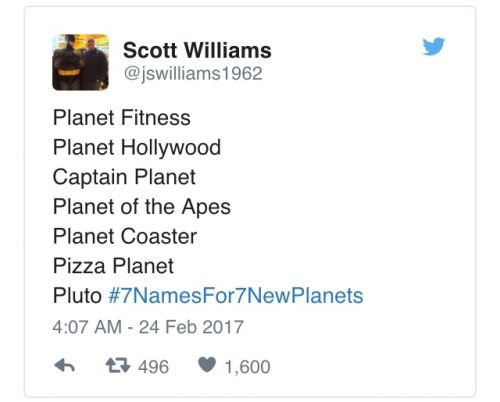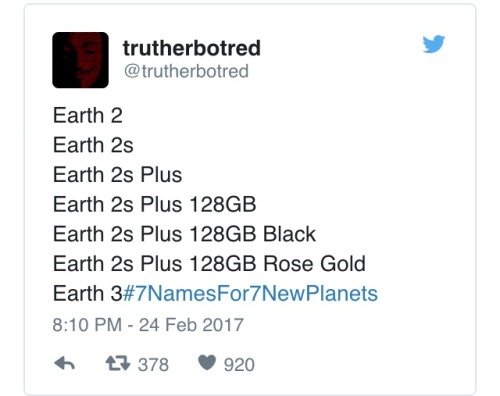When The Sun Sets On Stonehenge On The Shortest Day Of The Year, It’s Rays Align With Several Important





When the sun sets on Stonehenge on the shortest day of the year, it’s rays align with several important stones. Twice a year, the streets of Manhattan also line up with the setting sun, a phenomenon dubbed “Manhattanhenge”. Really, most cities with grid systems will see a similar effect (though it’s most dramatic in cities with tall buildings and a view of the true horizon). You can use a great tool called The Photographer’s Ephemeris to find out the “henge” dates for your city grid - or even individual streets.
Yesterday, (Friday, January 24th) the sun lined up with New York Avenue, a street in DC that runs diagonally up to the White House. (The orange line indicates alignment with the setting sun).
I went out with our multimedia intern Meg Vogel, and captured some images of the sun setting in line with a rather Stonehenge-y sculpture that sits in the middle of that street.
Here are dates for sunset “henge” events in some cities this year:
Manhattan May 25th, July 17th
Philadelphia April 5th, September 6th
Washington DC March 18th, September 24th
Chicago March 16th, September 26th
Phoenix March 20th, September 22nd
Portland, OR March 18th, September 24th
Is your city/town a grid? When’s your henge?
More Posts from Fillthevoid-with-space and Others
Hahaha, right after I start out a podcast talking about how we’ll never poke the Sun, it turns out we’re sending a probe to do just that!
Solar System: Things to Know This Week
Mark your calendars for summer 2018: That’s when we’re launching a spacecraft to touch the sun.
In honor of our first-ever mission to the heart of the solar system, this week we’re delving into the life and times of this powerful yellow dwarf star.

1. Meet Parker
Parker Solar Probe, our first mission to go to the sun, is named after Eugene Parker, an American astrophysicist who first theorized that the sun constantly sends out a flow of particles and energy called the solar wind. This historic mission will explore one of the last regions of the solar system to be visited by a spacecraft and help scientists unlock answers to questions they’ve been pondering for more than five decades.

2. Extra SPF, Please
Parker Solar Probe will swoop within 4 million miles of the sun’s surface, facing heat and radiation like no spacecraft before it. The mission will provide new data on solar activity to help us better understand our home star and its activity - information that can improve forecasts of major space-weather events that could impact life on Earth.

3. Majorly Massive
The sun is the center of our solar system and makes up 99.8 percent of the mass of the entire solar system. If the sun were as tall as a typical front door, Earth would be about the size of a nickel.
4. Different Spin
Since the sun is not a solid body, different parts of the sun rotate at different rates. At the equator, the sun spins once about every 25 days, but at its poles the sun rotates once on its axis every 36 Earth days.

5. Can’t Stand on It
The sun is a star and a star doesn’t have a solid surface. Rather, it’s a ball of ionized gas 92.1% hydrogen (H2) and 7.8% helium (He) held together by its own gravity.
6. Center of Attention
The sun isn’t a planet, so it doesn’t have any moons. But, the sun is orbited by eight planets, at least five dwarf planets, tens of thousands of asteroids, and hundreds of thousands to trillions of comets and icy bodies.

7. It’s Hot in There
And we mean really, really hot. The temperature at the sun’s core is about 27 million degrees Fahrenheit. However, its atmosphere, the corona, can reach temperatures of 3 million degrees. (That’s as if it got hotter the farther away you got from a fire, instead of cooler!) Parker Solar Probe will help scientists solve the mystery of why the corona’s temperature is so much higher than the surface.

8. Travel Conditions
The sun influences the entire solar system, so studying it helps us better understand the space weather that our astronauts and spacecraft travel through.
9. Life on the Sun?
Better to admire from afar. Thanks to its hot, energetic mix of gases and plasma, the sun can’t be home to living things. However, we can thank the sun for making life on Earth possible by providing the warmth and energy that supply Earth’s food chain.
10. Chance of a Lifetime
Last but not least, don’t forget that the first total solar eclipse to sweep across the U.S. from coast-to-coast since 1918 is happening on August 21, 2017. Our toolkit has you need to know to about it.
Want to learn more? Read our full list of the 10 things to know this week about the solar system HERE.
Make sure to follow us on Tumblr for your regular dose of space: http://nasa.tumblr.com
In Conversation with the Sun: Parker Solar Probe Communications
Our Sun powers life on Earth. It defines our days, nourishes our crops and even fuels our electrical grids. In our pursuit of knowledge about the universe, we’ve learned so much about the Sun, but in many ways we’re still in conversation with it, curious about its mysteries.

Parker Solar Probe will advance this conversation, flying through the Sun’s atmosphere as close as 3.8 million miles from our star’s surface, more than seven times closer to it than any previous spacecraft. If space were a football field, with Earth at one end and the Sun at the other, Parker would be at the four-yard line, just steps away from the Sun! This journey will revolutionize our understanding of the Sun, its surface and solar winds.

Supporting Parker on its journey to the Sun are our communications networks. Three networks, the Near Earth Network, the Space Network and the Deep Space Network, provide our spacecraft with their communications, delivering their data to mission operations centers. Their services ensure that missions like Parker have communications support from launch through the mission.

For Parker’s launch on Aug. 12, the Delta IV Heavy rocket that sent Parker skyward relied on the Space Network. A team at Goddard Space Flight Center’s Networks Integration Center monitored the launch, ensuring that we maintained tracking and communications data between the rocket and the ground. This data is vital, allowing engineers to make certain that Parker stays on the right path towards its orbit around the Sun.

The Space Network’s constellation of Tracking and Data Relay Satellites (TDRS) enabled constant communications coverage for the rocket as Parker made its way out of Earth’s atmosphere. These satellites fly in geosynchronous orbit, circling Earth in step with its rotation, relaying data from spacecraft at lower altitudes to the ground. The network’s three collections of TDRS over the Atlantic, Pacific and Indian oceans provide enough coverage for continuous communications for satellites in low-Earth orbit.

The Near Earth Network’s Launch Communications Segment tracked early stages of Parker’s launch, testing our brand new ground stations’ ability to provide crucial information about the rocket’s initial velocity (speed) and trajectory (path). When fully operational, it will support launches from the Kennedy spaceport, including upcoming Orion missions. The Launch Communications Segment’s three ground stations are located at Kennedy Space Center; Ponce De Leon, Florida; and Bermuda.

When Parker separated from the Delta IV Heavy, the Deep Space Network took over. Antennas up to 230 feet in diameter at ground stations in California, Australia and Spain are supporting Parker for its 24 orbits around the Sun and the seven Venus flybys that gradually shrink its orbit, bringing it closer and closer to the Sun. The Deep Space Network is delivering data to mission operations centers and will continue to do so as long as Parker is operational.
Near the Sun, radio interference and the heat load on the spacecraft’s antenna makes communicating with Parker a challenge that we must plan for. Parker has three distinct communications phases, each corresponding to a different part of its orbit.
When Parker comes closest to the Sun, the spacecraft will emit a beacon tone that tells engineers on the ground about its health and status, but there will be very little opportunity to command the spacecraft and downlink data. High data rate transmission will only occur during a portion of Parker’s orbit, far from the Sun. The rest of the time, Parker will be in cruise mode, taking measurements and being commanded through a low data rate connection with Earth.

Communications infrastructure is vital to any mission. As Parker journeys ever closer to the center of our solar system, each byte of downlinked data will provide new insight into our Sun. It’s a mission that continues a conversation between us and our star that has lasted many millions of years and will continue for many millions more.
For more information about NASA’s mission to touch the Sun: https://www.nasa.gov/content/goddard/parker-solar-probe
For more information about our satellite communications check out: http://nasa.gov/SCaN
Make sure to follow us on Tumblr for your regular dose of space: http://nasa.tumblr.com.
Five Famous Pulsars from the Past 50 Years
Early astronomers faced an obstacle: their technology. These great minds only had access to telescopes that revealed celestial bodies shining in visible light. Later, with the development of new detectors, scientists opened their eyes to other types of light like radio waves and X-rays. They realized cosmic objects look very different when viewed in these additional wavelengths. Pulsars — rapidly spinning stellar corpses that appear to pulse at us — are a perfect example.

The first pulsar was observed 50 years ago on August 6, 1967, using radio waves, but since then we have studied them in nearly all wavelengths of light, including X-rays and gamma rays.
Typical Pulsar
Most pulsars form when a star — between 8 and 20 times the mass of our sun — runs out of fuel and its core collapses into a super dense and compact object: a neutron star.

These neutron stars are about the size of a city and can rotate slowly or quite quickly, spinning anywhere from once every few hours to hundreds of times per second. As they whirl, they emit beams of light that appear to blink at us from space.
First Pulsar
One day five decades ago, a graduate student at the University of Cambridge, England, named Jocelyn Bell was poring over the data from her radio telescope - 120 meters of paper recordings.

Image Credit: Sumit Sijher
She noticed some unusual markings, which she called “scruff,” indicating a mysterious object (simulated above) that flashed without fail every 1.33730 seconds. This was the very first pulsar discovered, known today as PSR B1919+21.
Best Known Pulsar
Before long, we realized pulsars were far more complicated than first meets the eye — they produce many kinds of light, not only radio waves. Take our galaxy’s Crab Nebula, just 6,500 light years away and somewhat of a local celebrity. It formed after a supernova explosion, which crushed the parent star’s core into a neutron star.

The resulting pulsar, nestled inside the nebula that resulted from the supernova explosion, is among the most well-studied objects in our cosmos. It’s pictured above in X-ray light, but it shines across almost the entire electromagnetic spectrum, from radio waves to gamma rays.
Brightest Gamma-ray Pulsar
Speaking of gamma rays, in 2015 our Fermi Gamma-ray Space Telescope discovered the first pulsar beyond our own galaxy capable of producing such high-energy emissions.

Located in the Tarantula Nebula 163,000 light-years away, PSR J0540-6919 gleams nearly 20 times brighter in gamma-rays than the pulsar embedded in the Crab Nebula.
Dual Personality Pulsar
No two pulsars are exactly alike, and in 2013 an especially fast-spinning one had an identity crisis. A fleet of orbiting X-ray telescopes, including our Swift and Chandra observatories, caught IGR J18245-2452 as it alternated between generating X-rays and radio waves.

Scientists suspect these radical changes could be due to the rise and fall of gas streaming onto the pulsar from its companion star.
Transformer Pulsar
This just goes to show that pulsars are easily influenced by their surroundings. That same year, our Fermi Gamma Ray Space Telescope uncovered another pulsar, PSR J1023+0038, in the act of a major transformation — also under the influence of its nearby companion star.

The radio beacon disappeared and the pulsar brightened fivefold in gamma rays, as if someone had flipped a switch to increase the energy of the system.
NICER Mission
Our Neutron star Interior Composition Explorer (NICER) mission, launched this past June, will study pulsars like those above using X-ray measurements.

With NICER’s help, scientists will be able to gaze even deeper into the cores of these dense and mysterious entities.
For more information about NICER, visit https://www.nasa.gov/nicer
Make sure to follow us on Tumblr for your regular dose of space: http://nasa.tumblr.com
What's Made in a Thunderstorm and Faster Than Lightning? Gamma Rays!
A flash of lightning. A roll of thunder. These are normal stormy sights and sounds. But sometimes, up above the clouds, stranger things happen. Our Fermi Gamma-ray Space Telescope has spotted bursts of gamma rays - some of the highest-energy forms of light in the universe - coming from thunderstorms. Gamma rays are usually found coming from objects with crazy extreme physics like neutron stars and black holes.
So why is Fermi seeing them come from thunderstorms?

Thunderstorms form when warm, damp air near the ground starts to rise and encounters colder air. As the warm air rises, moisture condenses into water droplets. The upward-moving water droplets bump into downward-moving ice crystals, stripping off electrons and creating a static charge in the cloud.

The top of the storm becomes positively charged, and the bottom becomes negatively charged, like two ends of a battery. Eventually the opposite charges build enough to overcome the insulating properties of the surrounding air - and zap! You get lightning.

Scientists suspect that lightning reconfigures the cloud’s electrical field. In some cases this allows electrons to rush toward the upper part of the storm at nearly the speed of light. That makes thunderstorms the most powerful natural particle accelerators on Earth!

When those electrons run into air molecules, they emit a terrestrial gamma-ray flash, which means that thunderstorms are creating some of the highest energy forms of light in the universe. But that’s not all - thunderstorms can also produce antimatter! Yep, you read that correctly! Sometimes, a gamma ray will run into an atom and produce an electron and a positron, which is an electron’s antimatter opposite!

The Fermi Gamma-ray Space Telescope can spot terrestrial gamma-ray flashes within 500 miles of the location directly below the spacecraft. It does this using an instrument called the Gamma-ray Burst Monitor which is primarily used to watch for spectacular flashes of gamma rays coming from the universe.

There are an estimated 1,800 thunderstorms occurring on Earth at any given moment. Over the 10 years that Fermi has been in space, it has spotted about 5,000 terrestrial gamma-ray flashes. But scientists estimate that there are 1,000 of these flashes every day - we’re just seeing the ones that are within 500 miles of Fermi’s regular orbits, which don’t cover the U.S. or Europe.
The map above shows all the flashes Fermi has seen since 2008. (Notice there’s a blob missing over the lower part of South America. That’s the South Atlantic Anomaly, a portion of the sky where radiation affects spacecraft and causes data glitches.)

Fermi has also spotted terrestrial gamma-ray flashes coming from individual tropical weather systems. The most productive system we’ve seen was Tropical Storm Julio in 2014, which later became a hurricane. It produced four flashes in just 100 minutes!

Learn more about what Fermi’s discovered about gamma rays over the last 10 years and how we’re celebrating its accomplishments.
Make sure to follow us on Tumblr for your regular dose of space: http://nasa.tumblr.com.

I went stargazing in early August of this year (2019) and I want to suggest a few options that will hopefully make this sort of trip accessible to people who are curious about stargazing but haven’t tried it yet. I talk through the process of finding the right time and location, selecting campsites, preparing some tools to maintain your nightvision, and using an app to figure out stars and constellations more easily.
Below the cut are the transcript, sources, and music credits. Send me any topic suggestions via Tumblr message (you don’t need an account to do this, just submit as anonymous). You can also tweet at me on Twitter at @HDandtheVoid, or you can ask me to my face if you know me in real life. Subscribe on iTunes to get the new episodes of my semi-monthly podcast, and I’d love if you could rate and review it. Go ahead and tell friends if you think they’d like to hear it, too!
(The next episode is undecided, but I’m hoping to have it out for September.)
Transcript
Sources
Dark Site Finder
SkyView Lite
Intro Music: ‘Better Times Will Come’ by No Luck Club off their album Prosperity
Filler Music: me singing ‘House of Gold’ by Twenty-One Pilots off their album Vessel
me singing a parody of ‘Mexican Wine’ by Fountains of Wayne off their album Welcome Interstate Managers
Outro Music: ‘Fields of Russia’ by Mutefish off their album On Draught
I wish I’d found this before Episode 19, dang it! Such good gifs of astronauts, though.
Coffee in Space: Keeping Crew Members Grounded in Flight
Happy National Coffee Day, coffee lovers!
On Earth, a double shot mocha latte with soymilk, low-fat whip and a caramel drizzle is just about as complicated as a cup of coffee gets. Aboard the International Space Station, however, even just a simple cup of black coffee presents obstacles for crew members.

Understanding how fluids behave in microgravity is crucial to bringing the joys of the coffee bean to the orbiting laboratory. Astronaut Don Pettit crafted a DIY space cup using a folded piece of overhead transparency film. Surface tension keeps the scalding liquid inside the cup, and the shape wicks the liquid up the sides of the device into the drinker’s mouth.

The Capillary Beverage investigation explored the process of drinking from specially designed containers that use fluid dynamics to mimic the effect of gravity. While fun, this study could provide information useful to engineers who design fuel tanks for commercial satellites!

The capillary beverage cup allows astronauts to drink much like they would on Earth. Rather than drinking from a shiny bag and straw, the cup allows the crew member to enjoy the aroma of the beverage they’re consuming.

On Earth, liquid is held in the cup by gravity. In microgravity, surface tension keeps the liquid stable in the container.

The ISSpresso machine brought the comforts of freshly-brewed coffees and teas to the space station. European astronaut Samantha Cristoforetti enjoyed the first cup of espresso brewed using the ISSpresso machine during Expedition 43.


Now, during Expedition 53, European astronaut Paolo Nespoli enjoys the same comforts.

Astronaut Kjell Lindgren celebrated National Coffee Day during Expedition 45 by brewing the first cup of hand brewed coffee in space.

We have a latte going on over on our Snapchat account, so give us a follow to stay up to date! Also be sure to follow @ISS_Research on Twitter for your daily dose of space station science.
Make sure to follow us on Tumblr for your regular dose of space: http://nasa.tumblr.com.
This has been going on since 1995! There are so many pictures! I gotta check these out but it will take hours. Maybe treat myself to like ten a day? It’s a better way to wake up than checking Facebook right now, I like this plan.

The hardest part of determining longitude was figuring out how sailors could find their longitudinal coordinates at sea. There were a lot of methods proposed but adding a ship into the equation makes precision difficult. Learn about the Longitude Act of 1714 and how, even though this podcast loves astronomy, the astronomical method might not always be the best option.
Below the cut are my sources, music credits, a timeline of the astronomers and engineers and clockmakers I mention, a vocab list, a really cool resource that lets you drag continents all over a flattened map of Earth to compare their sizes at different latitudes, and the transcript of this episode. Let me know what you think I should research next by messaging me here, tweeting at me at @HDandtheVoid, or asking me to my face if you know me in real life. And please check out the podcast on iTunes, rate it or review it if you’d like, subscribe, and maybe tell your friends about it if you think they’d like to listen!
(My thoughts on the next episode were the Voyager golden records, space race history, the transit of Venus, or maybe something about the Moon landing. I’m loving Edmond Halley again these days, too. I’m prepping to interview a friend about her graduate-level research into the history of the universe and possibly dark matter, too. Let me know by the 20th and I’ll hopefully have the next podcast up on September 25th! If not then, I’ll push for October 2nd.)
Glossary
azimuth - a section of the horizon measured between a fixed point and the vertical circle passing through the center of an object. See example in the link.
equator - Earth’s zero line of latitude. It’s the place on Earth where the Sun is directly overhead at noon on the vernal and autumnal equinoxes.
kamal - an Arabic navigation tool consisting of a knotted string and a piece of wood. A navigator would tie a knot in the string and, by holding it in their teeth, sight the North Star along the top of the wooden piece and the horizon along the bottom. To return home, the navigator would sail north or south to bring Polaris to the altitude they had observed in their home port, then turn left or right and sail down the latitude, keeping Polaris at a constant angle. Over time, Arab navigators started tying knots at regular intervals of a fingerwidth, called an issbah, that’s about 1 degree and 36 minutes.
magnetosphere - an invisible barrier that surrounds a celestial objet. It is often generated by the movement of the liquid metal core of the object. Around a planet, it deflects high-energy, charged particles called cosmic rays that can either come from the Sun or, less often, from interstellar space.
prime meridian - Earth’s zero degree of longitude. In current maps and time zones, this invisible, imaginary line runs through London, England.
sextant - a device used to determine an observer’s location based on the observation of a known celestial object and a lot of calculation. It is still in use by sailors.
tropic of cancer - a line of latitude that marks where the Sun will be at noon on the summer solstice.
tropic of capricorn - a line of latitude that marks where the Sun will be at noon on the winter solstice.
Script/Transcript
Sources
Longitude at Sea via The Galileo Project at Rice University
Vitamin C necessity via University of Maryland Medical Center
Scurvy via NHS
Scurvy via the Encyclopedia Britannica online
An interactive map that shows how our current map distorts land masses by letting you compare different countries’ sizes.
Sobel, Dava. Longitude. Walker & Co.; New York, 1995.
“anyone living below the Equator would melt into deformity from the horrible heat” (3).
“It simply urged Parliament to welcome potential solutions from any field of science or art, put forth by individuals or groups of any nationality, and to reward success handsomely” (53).
Timeline
Claudius Ptolemy, Greek (100-170 CE)
Johannes Werner (in Latin, Ioannis Vernerus), German (1468-1522)
Tycho Brahe, Danish (1541-1601)
Galileo Galilei, Italian (1564-1642)
Giovanni Cassini (in French, Jean-Dominique Cassini), Italian/French (1625-1712)
Christiaan Huygens, Dutch (1629-1695)
Sir Isaac Newton, English (1642-1726/7)
Ole Rømer, Danish (1644-1710)
John Flamsteed, English (1646-1719)
Edmond Halley, English (1656-1742)
John Hadley, English (1682-1744)
John Harrison, English (1693-1776)
Thomas Godfrey, American (1704-1749)
John Bird, English (1709-1776)
Larcum Kendall, English (1719-1790)
James Cook, English (1728-1779)
Nevil Maskelyne, English (1732-1811)
John Arnold, English (1736-1799)
Thomas Earnshaw, English (1749-1829)
Intro Music: ‘Better Times Will Come’ by No Luck Club off their album Prosperity
Outro Music: ‘Fields of Russia’ by Mutefish off their album On Draught
Spacewalkers Successfully Connect Adapter for Commercial Crew Vehicles
ISS - Expedition 50 Mission patch / EVA - Extra Vehicular Activities patch. March 30, 2017 Expedition 50 Commander Shane Kimbrough and Flight Engineer Peggy Whitson of NASA concluded their spacewalk at 2:33 p.m. EDT. During the spacewalk, which lasted just over seven hours, the two astronauts successfully reconnected cables and electrical connections on the Pressurized Mating Adapter-3. PMA-3 will provide the pressurized interface between the station and the second of two international docking adapters to be delivered to the complex to support the dockings of U.S. commercial crew spacecraft in the future.
Image above: Spacewalkers Shane Kimbrough (spacesuit with red stripe on legs) and Peggy Whitson are pictured shortly after exiting the Quest airlock this morning. Image Credits: @Thom_Astro. The duo were also tasked with installing four thermal protection shields on the Tranquility module of the International Space Station. The shields were required to cover the port where the PMA-3 was removed earlier in the week and robotically installed on the Harmony module. During the spacewalk, one of the shields was inadvertently lost. The loss posed no immediate danger to the astronauts and Kimbrough and Whitson went on to successfully install the remaining shields on the common berthing mechanism port. A team from the Mission Control Center at NASA’s Johnson Space Center in Houston devised a plan for the astronauts to finish covering the port with the PMA-3 cover Whitson removed earlier in the day. The plan worked, and the cover was successfully installed, providing thermal protection and micrometeoroid and orbital debris cover for the port. To round out the spacewalk, Kimbrough and Whitson also installed a different shield around the base of the PMA-3 adapter for micrometeoroid protection. The shield was nicknamed a cummerbund as it fits around the adapter similar to a tuxedo’s cummerbund worn around the waist.
Image above: Astronaut Peggy Whitson signs her autograph near an Expedition 50 mission patch attached to the inside the International Space Station. Image Credit: NASA. Having completed her eighth spacewalk, Whitson now holds the record for the most spacewalks and accumulated time spacewalking by a female astronaut. Spacewalkers have now spent a total of 1,243 hours and 42 minutes outside the station during 199 spacewalks in support of assembly and maintenance of the orbiting laboratory. Related links: International docking adapters: https://www.nasa.gov/feature/meet-the-international-docking-adapter Peggy Whitson spacewalk record: https://blogs.nasa.gov/spacestation/2017/03/29/astronaut-peggy-whitson-set-to-break-spacewalk-record-thursday/ Space Station Research and Technology: https://www.nasa.gov/mission_pages/station/research/index.html International Space Station (ISS): https://www.nasa.gov/mission_pages/station/main/index.html Images (mentioned), Text, Credits: NASA/Mark Garcia. Best regards, Orbiter.ch Full article
-
 read-owl-the-books liked this · 6 years ago
read-owl-the-books liked this · 6 years ago -
 soular-punk reblogged this · 7 years ago
soular-punk reblogged this · 7 years ago -
 vixensugarcultist liked this · 7 years ago
vixensugarcultist liked this · 7 years ago -
 fillthevoid-with-space reblogged this · 8 years ago
fillthevoid-with-space reblogged this · 8 years ago -
 sarasravencrofts reblogged this · 8 years ago
sarasravencrofts reblogged this · 8 years ago -
 homebodyhestia liked this · 8 years ago
homebodyhestia liked this · 8 years ago -
 tatuung reblogged this · 8 years ago
tatuung reblogged this · 8 years ago -
 tatuung liked this · 8 years ago
tatuung liked this · 8 years ago -
 skeletonsandwildflowers liked this · 8 years ago
skeletonsandwildflowers liked this · 8 years ago -
 thepausebeforethenote reblogged this · 9 years ago
thepausebeforethenote reblogged this · 9 years ago -
 a-man-chooses-a-slave-obeys reblogged this · 9 years ago
a-man-chooses-a-slave-obeys reblogged this · 9 years ago -
 a-man-chooses-a-slave-obeys liked this · 9 years ago
a-man-chooses-a-slave-obeys liked this · 9 years ago -
 djdontgiveashit liked this · 9 years ago
djdontgiveashit liked this · 9 years ago -
 sayorkeepstilll reblogged this · 9 years ago
sayorkeepstilll reblogged this · 9 years ago -
 inarex liked this · 9 years ago
inarex liked this · 9 years ago -
 m-u-n-c-h-y liked this · 9 years ago
m-u-n-c-h-y liked this · 9 years ago -
 corrupted-change liked this · 9 years ago
corrupted-change liked this · 9 years ago -
 iamregularshit liked this · 9 years ago
iamregularshit liked this · 9 years ago -
 cobbled-street-to-nowhere reblogged this · 9 years ago
cobbled-street-to-nowhere reblogged this · 9 years ago -
 joannaaloysia liked this · 9 years ago
joannaaloysia liked this · 9 years ago -
 redrower reblogged this · 9 years ago
redrower reblogged this · 9 years ago -
 northcountryman reblogged this · 9 years ago
northcountryman reblogged this · 9 years ago -
 angeltherubiks reblogged this · 9 years ago
angeltherubiks reblogged this · 9 years ago -
 youcancall-me-al reblogged this · 9 years ago
youcancall-me-al reblogged this · 9 years ago -
 wilhelmina-may-marlene liked this · 9 years ago
wilhelmina-may-marlene liked this · 9 years ago -
 never-not-reblog reblogged this · 9 years ago
never-not-reblog reblogged this · 9 years ago -
 never-not-reblog liked this · 9 years ago
never-not-reblog liked this · 9 years ago -
 ciels-toilet-paper-is-money liked this · 9 years ago
ciels-toilet-paper-is-money liked this · 9 years ago -
 sometimesigolf-blog liked this · 9 years ago
sometimesigolf-blog liked this · 9 years ago -
 sidewalkscienceguy reblogged this · 9 years ago
sidewalkscienceguy reblogged this · 9 years ago -
 sidewalkscienceguy liked this · 9 years ago
sidewalkscienceguy liked this · 9 years ago -
 space-hideaway reblogged this · 9 years ago
space-hideaway reblogged this · 9 years ago -
 bookssbook liked this · 9 years ago
bookssbook liked this · 9 years ago -
 dionysuschild reblogged this · 9 years ago
dionysuschild reblogged this · 9 years ago -
 dionysuschild liked this · 9 years ago
dionysuschild liked this · 9 years ago -
 thechickenisinpiccadillysquare liked this · 10 years ago
thechickenisinpiccadillysquare liked this · 10 years ago -
 rockcru liked this · 10 years ago
rockcru liked this · 10 years ago -
 rockcru reblogged this · 10 years ago
rockcru reblogged this · 10 years ago -
 frvckledfox liked this · 10 years ago
frvckledfox liked this · 10 years ago
A podcast project to fill the space in my heart and my time that used to be filled with academic research. In 2018, that space gets filled with... MORE SPACE! Cheerfully researched, painstakingly edited, informal as hell, definitely worth everyone's time.
243 posts








